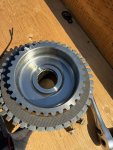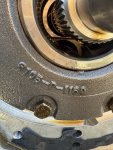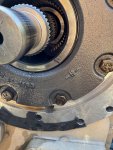Ronmar
Well-known member
- 4,413
- 8,312
- 113
- Location
- Port angeles wa
I am very glad I did this! Looked great inside, popped off the outer clutch pack snap ring and lifted out the clutch pack and carrier, discs and spacers look great. Center tower bushing, springs and piston look great, roller bearing looks OK until I try and lift it out.. The front/outer race and needle carrier lifted right off with no resistance leaving the inner race behind on the center tower…
It was just a matter of time before the outer race and needle carrier popped forward off the inner race and down to rest on the carrier. Then the lip on the inner race and crimps that are supposed to hold it all together, would have methodically chipped away at the composite roller bearing carrier/spacer every time the clutch carrier slid back against it, until it released the rollers to thrash around in the clutch-pack and on into the rest of the transmission…
Whew!
Inner race is still on the center tower.
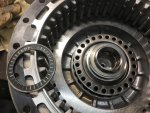
after I lifted out the thrust bearing inner race…
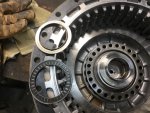
It was just a matter of time before the outer race and needle carrier popped forward off the inner race and down to rest on the carrier. Then the lip on the inner race and crimps that are supposed to hold it all together, would have methodically chipped away at the composite roller bearing carrier/spacer every time the clutch carrier slid back against it, until it released the rollers to thrash around in the clutch-pack and on into the rest of the transmission…
Whew!
Inner race is still on the center tower.

after I lifted out the thrust bearing inner race…

Last edited:



